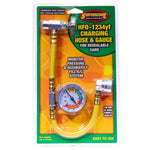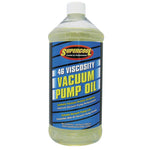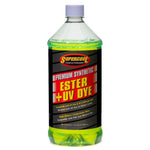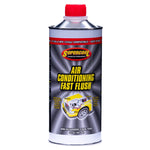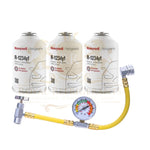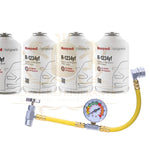You have no items in your shopping cart.
Everything You Need to Know About R-1234yf vs R-134a Performance for HVAC and Automotive Applications
The world of automotive and HVAC cooling is evolving fast — and so are the refrigerants that make these systems work. For decades, R-134a was the standard refrigerant for vehicle air conditioning systems, replacing the older, ozone-depleting R-12 Freon.
But now, the industry is transitioning to R-1234yf, a next-generation refrigerant that’s more environmentally friendly and designed to meet modern climate regulations.
So, how do R-1234yf and R-134a compare in terms of performance, efficiency, cost, and compatibility — both for HVAC and automotive applications?
Let’s find out.
What Are R-134a and R-1234yf?
R-134a (Tetrafluoroethane)
-
Introduced in the early 1990s as a replacement for R-12 (Freon).
-
Belongs to the HFC (Hydrofluorocarbon) family.
-
Has zero ozone depletion potential (ODP = 0).
-
Global Warming Potential (GWP) ≈ 1430.
-
Used in most vehicles built between 1994 and 2016, as well as HVAC and refrigeration systems.
R-1234yf (Tetrafluoropropene)
-
Developed as an HFO (Hydrofluoroolefin) refrigerant to replace R-134a.
-
Introduced around 2013 in response to stricter environmental regulations.
-
Has near-zero ozone depletion (ODP = 0) and very low GWP ≈ 4.
-
Used in modern vehicles (2017 and newer) and some next-gen HVAC systems.
-
Slightly mildly flammable (ASHRAE class A2L).
-

Environmental Comparison
| Property | R-134a | R-1234yf |
|---|---|---|
| Refrigerant Type | HFC | HFO |
| Ozone Depletion Potential (ODP) | 0 | 0 |
| Global Warming Potential (GWP) | ~1430 | ~4 |
| Regulatory Status | Phased down globally under Kigali Amendment | Compliant with current standards |
| Environmental Impact | Moderate | Very low |
💡 Key takeaway:
R-1234yf is 400 times less harmful to the atmosphere than R-134a in terms of global warming potential.
Performance Comparison
Let’s look at how these refrigerants perform under real-world HVAC and automotive conditions:
| Feature | R-134a | R-1234yf |
|---|---|---|
| Cooling Efficiency (COP) | High (benchmark standard) | Slightly lower (~3–5% difference) |
| Operating Pressure | Lower (~150–250 psig) | Slightly higher (~170–270 psig) |
| Thermal Capacity | Excellent | Comparable |
| Discharge Temperature | Moderate | Slightly higher |
| Compressor Load | Low | Slightly higher (~2–3%) |
| System Design | Compatible with older A/C systems | Requires R-1234yf-specific systems |
| Leak Tolerance | Non-flammable | Mildly flammable (A2L class) |
💬 In short:
R-1234yf performs almost identically to R-134a in cooling capacity, though it requires tighter system design and higher precision due to its mild flammability and operating characteristics.
Energy Efficiency
Both refrigerants deliver excellent efficiency, but testing shows:
-
R-1234yf systems achieve 95–98% of the efficiency of comparable R-134a systems.
-
R-1234yf performs better in newer, optimized systems designed specifically for it (with improved compressors, condensers, and heat exchangers).
-
Under identical load conditions, energy consumption may increase by 2–5%, but this is offset by environmental benefits.
Temperature-Pressure Characteristics
Below is a simplified P-T comparison chart at key temperatures (in °F):
| Temperature (°F) | R-134a Pressure (psig) | R-1234yf Pressure (psig) |
|---|---|---|
| 40°F | 38 | 36 |
| 60°F | 70 | 67 |
| 80°F | 118 | 115 |
| 100°F | 174 | 170 |
| 120°F | 245 | 240 |
💡 Observation:
The pressures are nearly identical, meaning R-1234yf’s thermodynamic behavior closely matches R-134a — which is why it’s such an effective replacement.
System Compatibility
Although both refrigerants behave similarly, they are not interchangeable without system modification.
| Component | Compatibility |
|---|---|
| Compressors | Different lubricants (PAG for R-134a, POE/PAG blends for R-1234yf) |
| Service Ports | Different sizes to prevent cross-mixing |
| Hoses & Seals | Must be HFO-rated to prevent leaks |
| Sensors & Valves | Designed for R-1234yf’s pressure and flammability class |
| Recovery Equipment | Dedicated R-1234yf service tools required |
⚠️ Never mix R-134a and R-1234yf. It’s illegal in many countries and can cause compressor failure or contamination.
Cost Comparison
| Factor | R-134a | R-1234yf |
|---|---|---|
| Average Price per Pound (2025) | $6–$12 | $80–$120 |
| System Service Cost | Lower | Higher (due to equipment and licensing) |
| Availability | Widespread | Limited to newer systems |
| Refill Cost (per car) | $50–$100 | $200–$400 |
💡 R-1234yf is significantly more expensive, primarily because of production costs, licensing, and limited supply. Prices are expected to drop as adoption becomes universal.
Safety Considerations
-
R-134a is non-flammable and very safe to handle.
-
R-1234yf is mildly flammable (A2L classification), but its ignition risk is extremely low under real-world conditions.
Modern A/C systems include safety designs such as:
-
Improved ventilation and seals
-
Leak detection sensors
-
Fire-resistant materials
As a result, R-1234yf systems are considered just as safe as R-134a in vehicles.
Environmental Regulations
Global environmental policies (such as the Kigali Amendment and EU F-Gas Regulation) have accelerated the phase-out of high-GWP refrigerants:
-
R-134a is being phased down worldwide.
-
R-1234yf is approved under current and future regulations.
Many countries now require that new vehicles use R-1234yf or another low-GWP refrigerant.
Use in HVAC Applications
While R-134a is sometimes used in chillers and portable A/C units, R-1234yf is rarely used in traditional HVAC systems.
However, its underlying chemistry (HFO technology) is the basis for new refrigerants like R-1234ze and R-1234zd, which are replacing high-GWP refrigerants in:
-
Commercial chillers
-
Heat pumps
-
Residential A/C units
So, while R-1234yf itself is mainly for automotive systems, its HFO family represents the future of HVAC refrigerants.
Which Refrigerant Is Better?
| Category | Best Performer |
|---|---|
| Cooling Efficiency | R-134a (slightly higher) |
| Environmental Safety | R-1234yf |
| System Compatibility | R-134a (legacy systems) |
| Future Compliance | R-1234yf |
| Cost & Availability | R-134a (cheaper, widespread) |
| Long-Term Viability | R-1234yf (regulation-proof) |
💬 Verdict:
If your car or HVAC system was designed for R-134a, it’s best to continue using it (while it’s available).
But for new systems and future compliance, R-1234yf is the smart and sustainable choice.
Conclusion
Both R-134a and R-1234yf deliver reliable cooling performance — but they represent different generations of refrigerant technology.
-
R-134a offers proven performance and affordability but is being phased down due to its high GWP.
-
R-1234yf delivers nearly identical cooling power with minimal environmental impact, making it the next standard in automotive air conditioning and a foundation for eco-friendly HVAC refrigerants.
As regulations tighten and technology advances, the transition to low-GWP refrigerants like R-1234yf is inevitable — leading to a greener, more efficient future for cooling and comfort systems.
 English
English

